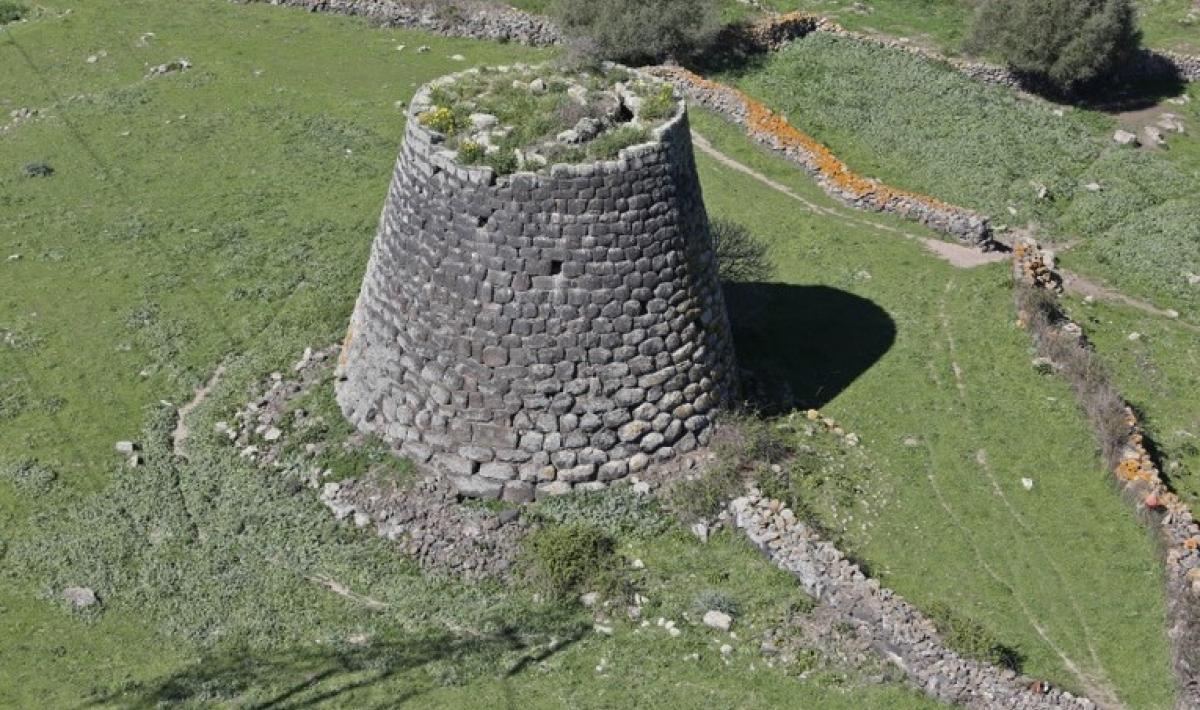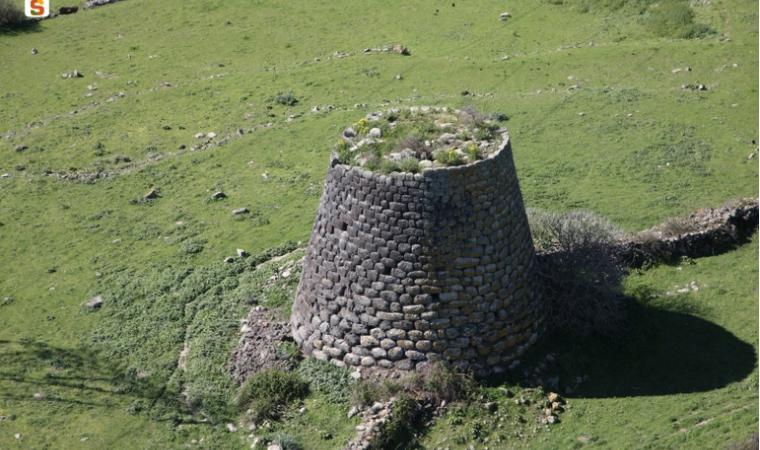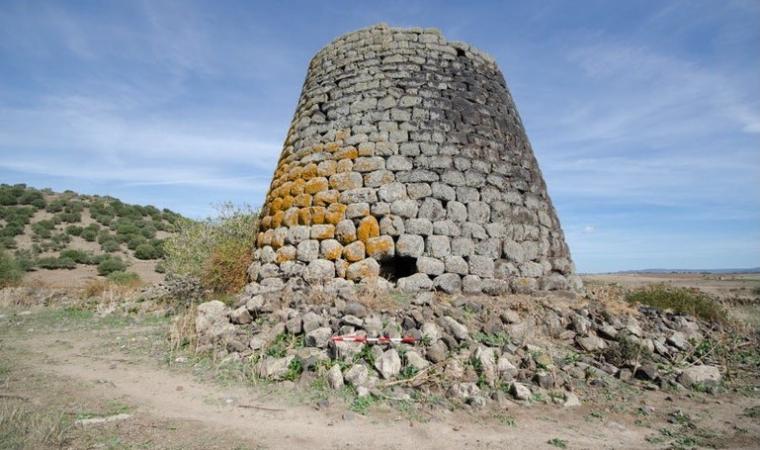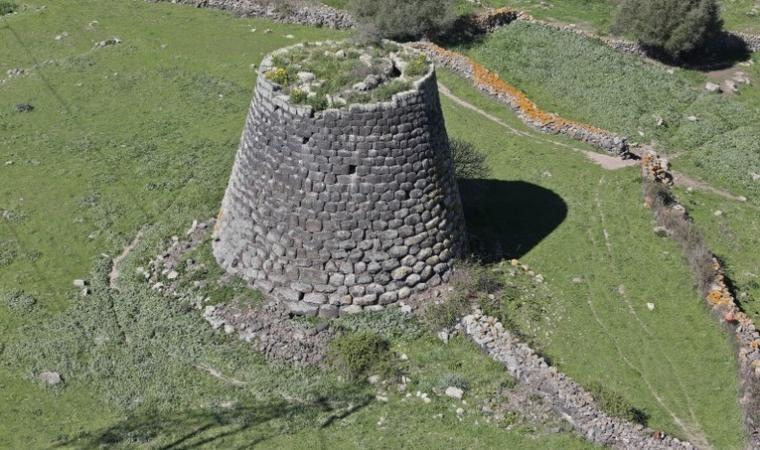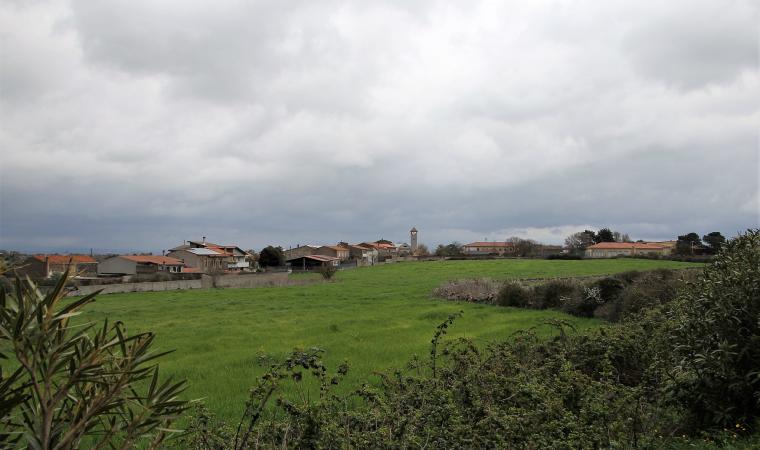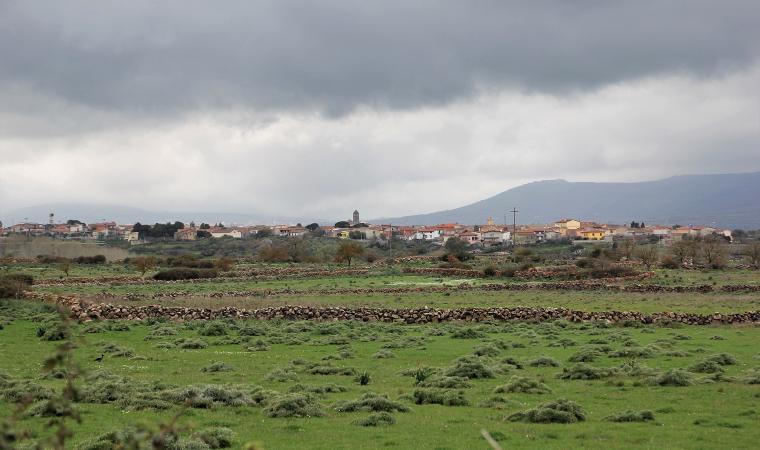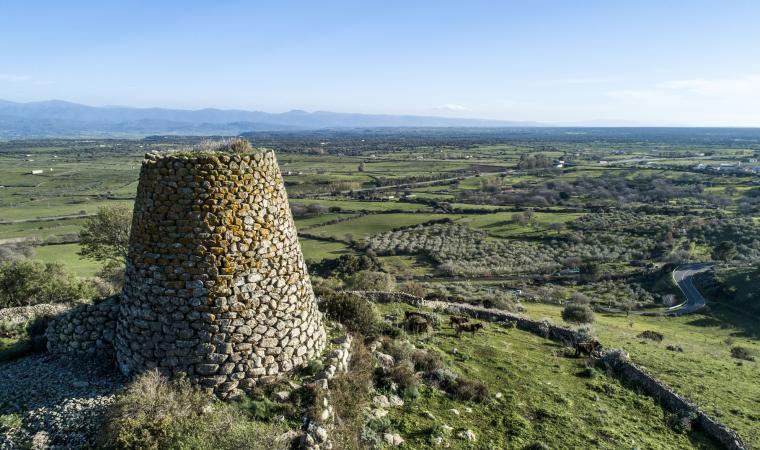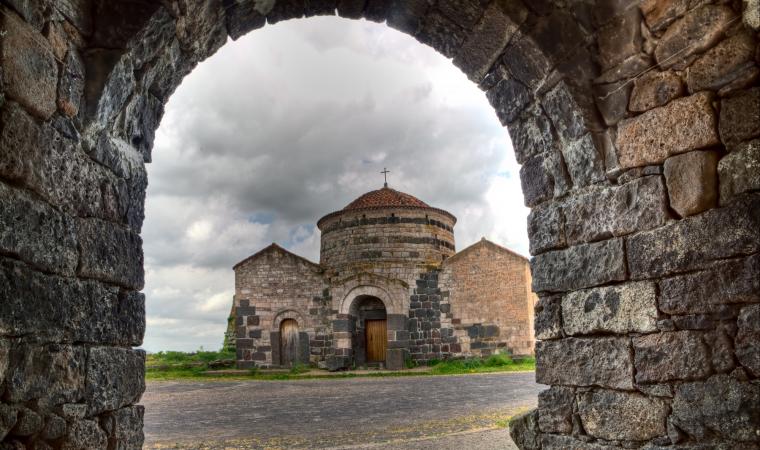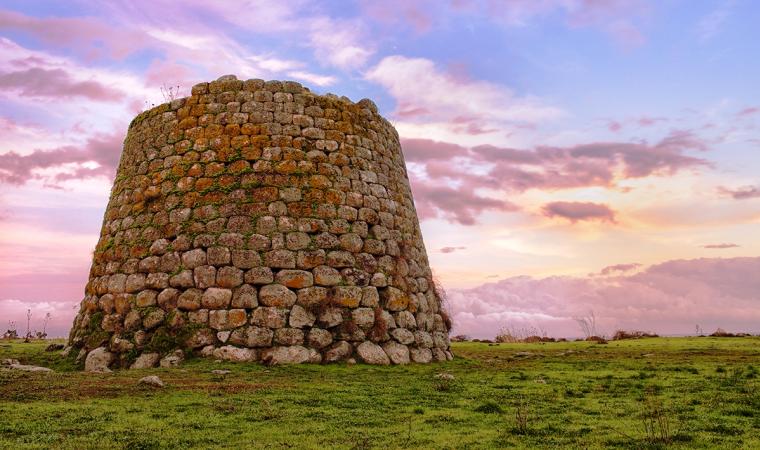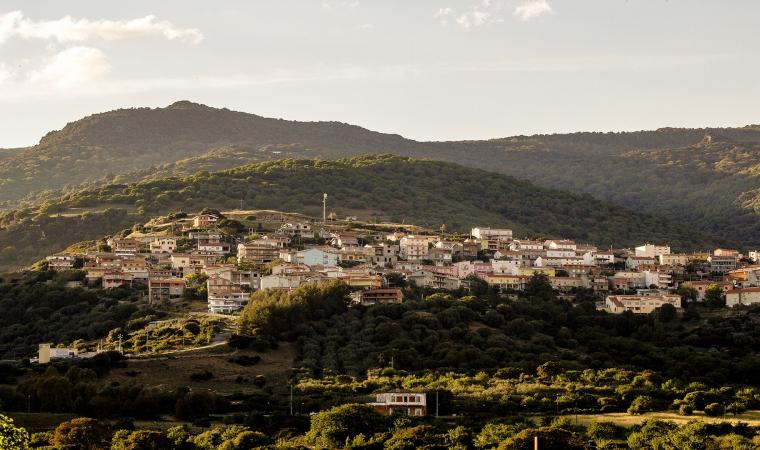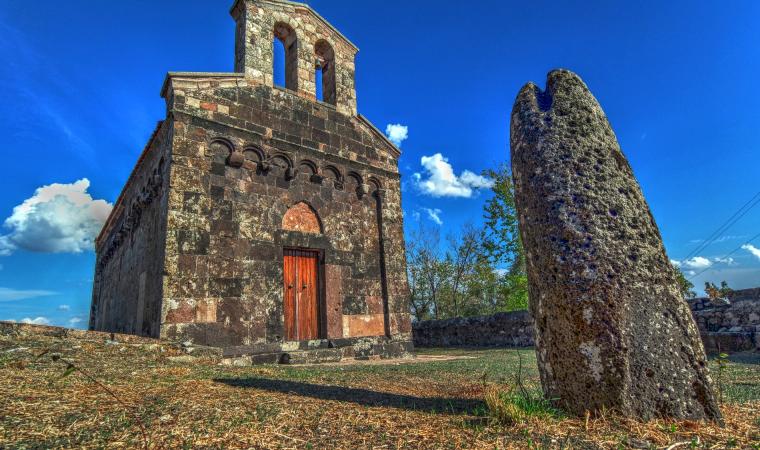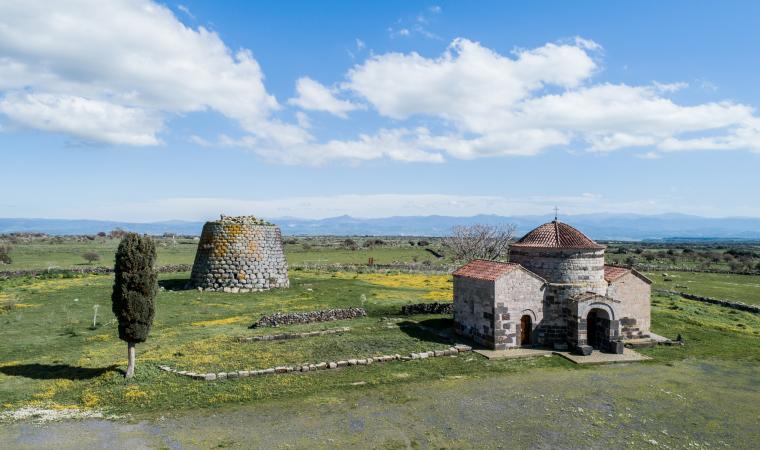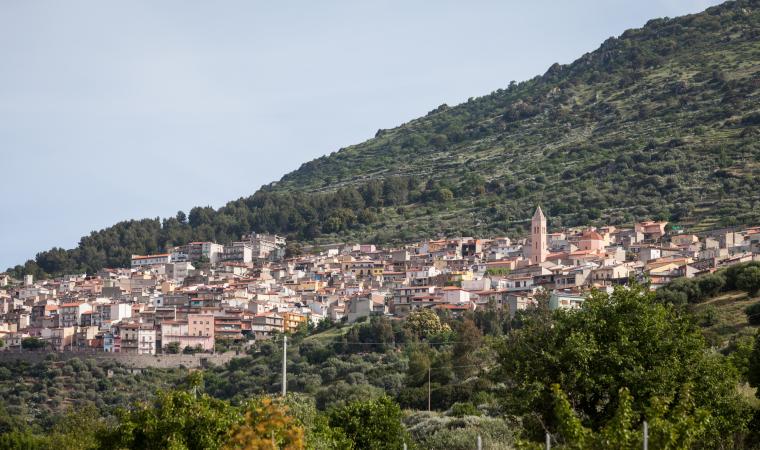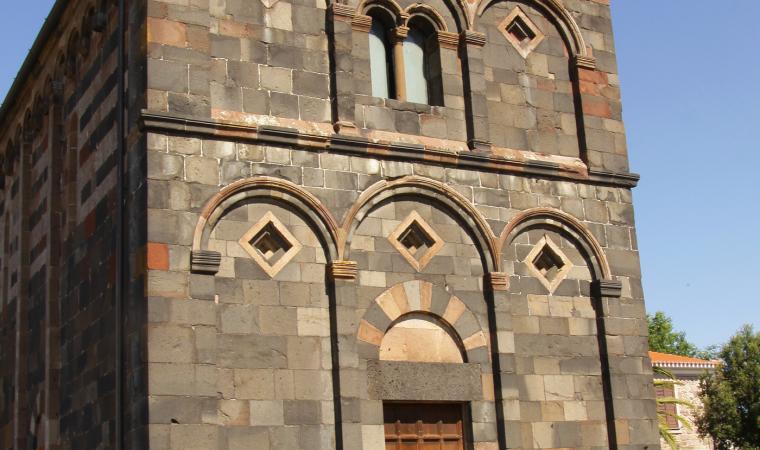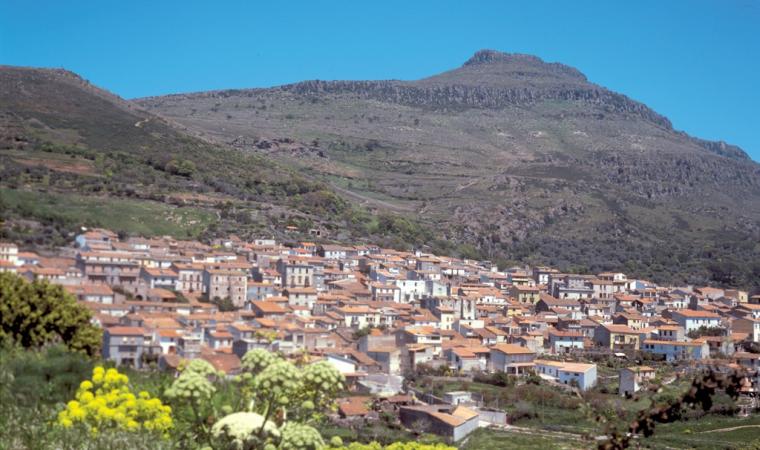It is one of the most ‘technically’ well-finished nuraghi on the island, thanks to the level the Bronze Age builders reached when working and finishing the stone ashlars. The single-tower Nuraghe Corbos was built on a small hill seven kilometres from Silanus, between the plateau of the same name and the Ottana plain, in ana area dense with evidence dating back to the Nuragic age. You will see a truncated cone tower about twelve metres high, built using medium-sized skilfully-worked basalt blocks: in the first rows they are polygonal, while from the middle upwards they are roughly square-shaped and the exposed side is slightly convex.
The position of the architrave above the entrance is almost level with the walking surface. In fact, the collapsed stones have buried more than a metre of the tower. Nevertheless, access is possible through a breach on the west side, obtained by removing an ashlar, which leads to the staircase connecting the ground floor and the upper level.
In the access corridor you will notice the passageway niche and the staircase, lit up through three slits. The central chamber has a tholos vault and three niches positioned in the form of a cross. The staircase, a few rows of which still remain, led to the upper room that has a diameter of about three metres.
Traces of walls pertaining to the village emerge around the building. The area must have been frequented starting in the pre-Nuragic age: an isolated menhir, unusually made of granite, seems to bear witness to this, embedded in the ground about a hundred metres from the nuraghe in the north-easterly direction. At the same distance, but in the opposite direction, you will find the Corbos Giants’ Tomb. It is thought that it was a dolmen building, perhaps renovated at a later time. Also in the corridor of the tomb there is an ‘intruder’: one of the orthostates is made of granite. Next to the tomb you will see five baetyls, positioned irregularly and probably moved over time. Three hundred metres from the nuraghe are the remains of another Giants’ Tomb, called s’Abbaia. Traces of the funeral chamber, over eleven metres long, and of the right wing of the exedra still remain.
The territory of Silanus, a village belonging to the Borghi Autentici d’Italia club, is an open-air archaeological museum: it has more than 30 nuraghi, 19 Giants’ Tombs, five domus de Janas and a sacred well, as well as several fences and sacred fonts. Among the most significant are the Nuraghe Orolio (or Madrone), the Giants’ Tomb of Sa Pedra Longa – which is where the baetyls visible in the churchyard of the Church of San Lorenzo come from - and above all the complex of Santa Sabina, in which a nuraghe and a Byzantine church face each other a few dozen metres away.

